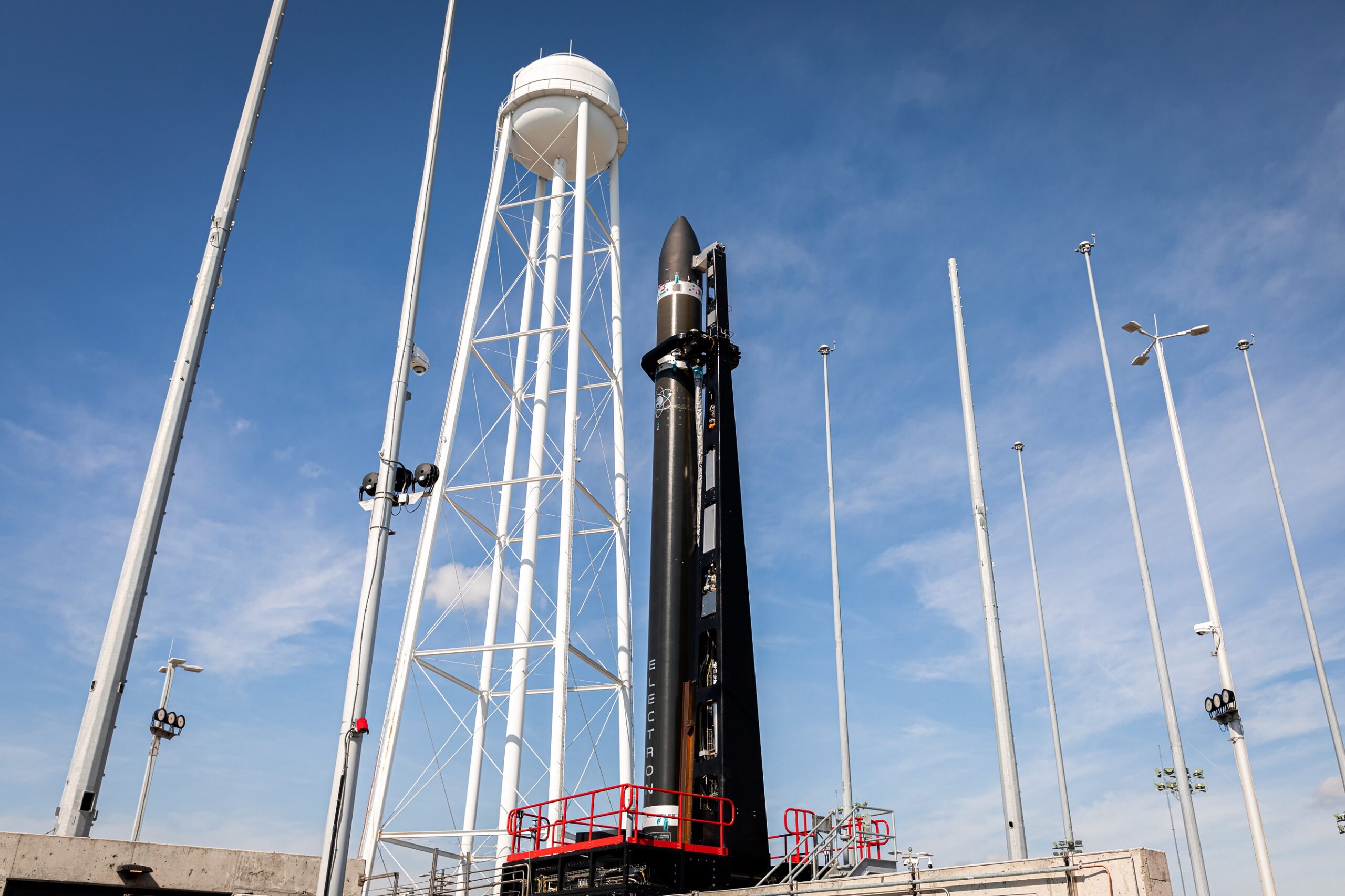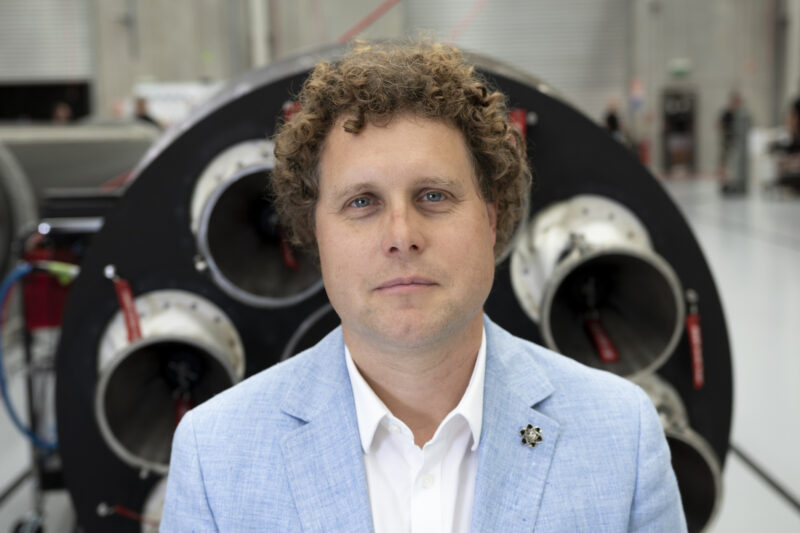Latest News

An Electron on the pad at Launch Complex 2, Wallops Island, Virginia. Photo: Rocket Lab
Rocket Lab‘s launch site at the Wallops Flight Facility on the eastern coast of Virginia is expected to see a launch in 2022, as Rocket Lab and NASA near completion of a new flight safety certification system.
Launch Complex 2 will be the company’s first launch site in the United States. It was built specifically for the Electron rocket and is expected to support monthly orbital launches for both U.S. government and commercial missions. The complex has been finished since early 2020, when Rocket Lab rolled out an Electron vehicle on the pad, but there have been delays with the Autonomous Flight Termination System (AFTS) that will be used at the range.
According to NASA spokesperson Jeremy Eggers, NASA is working to certify the NASA-developed software for the NASA Autonomous Flight Termination Unit (NAFTU), which Rocket Lab intends to use for its flights from Wallops. Rocket Lab has been working with NASA on the unit in a development partnership.
There has been progress on the certification. On Dec. 17, NASA released to industry and Rocket Lab the most current version of the NAFTU software and documentation.
“We remain on track to complete flight safety certification of the software by the end of February 2022,” Eggers said. “Once that happens, Rocket Lab will need to process the software with their hardware and go through a safety review. In all, we expect to be able to support launch of the first Electron launch from Wallops in the second quarter of 2022.”
Meanwhile, Rocket Lab is ready to go at Wallops. “We could put a rocket on that pad and fly tomorrow,” Peter Beck, founder and CEO of Rocket Lab, told Via Satellite. “NASA has had a number of delays in completing the [certification] process. So hopefully [in 2022], we’ll be able to see our vehicle on that pad and get customers lined up and start flying from there.”
When Rocket Lab chose Wallops over Cape Canaveral for its U.S. launch site in 2018, the company targeted an aggressive timeline, hoping to launch from Wallops in the third quarter of 2019. Rocket Lab has had to adjust its launch schedule during the wait. A U.S. Space Force/Air Force Research Lab mission launched in July had to be moved to the New Zealand Rocket Lab Launch Complex 1 because of the delayed certification process. The launcher expects to complete an additional ten launches per year at the new Wallops launch pad.
The AFTS development partnership between Rocket Lab and NASA came about because of issues with launch processes during Rocket Lab’s first flight in May of 2018.
“Our very first flight was lost because of a simple ground software configuration on a traditional flight termination system,” Beck said. “After that flight, we said, ‘Nope, never again. We’re not having all of these guys on buttons, and making mistakes and whatnot. We’re going to do it all with a computer, and we’re going to do it autonomously.’ We worked with NASA who had an autonomous system in development, and we actually started flying it with them a year ago. We used the Autonomous Flight Termination System to fly out of the New Zealand range on a standard basis.”
NASA is now hoping to get all U.S. launches converted over from manual flight termination operations to autonomous flight termination. NASA isn’t the main driver to convert to AFTS, Eggers said, but is more of a whole-of-industry initiative.
“The NAFTU is a game-changing command and control system for small launch vehicle providers for use at all U.S. launch ranges in ensuring public safety during launch operations. The system provides a number of benefits, such as wider launch windows, smaller downrange safety corridors that enhance area clearance operations, and reduced need/expense of ground-based systems.”
“The autonomous system that we worked with NASA on is a NASA product, and it’s NASA software,” Beck said. “They are certifying their own software to enable their own box of electronics and software to be used on any launch vehicle in any range in America. At the end of the day, what they’re trying to create, and what we’re partnered with them to create, is a box of electronics that every launch vehicle can bolt on and use on any U.S. range.”
When NASA finishes all their software updates and certifies the software, Beck says, all of the pain of a flight termination system will be evaporated for other launch providers.
“Providers can just go and buy the box from NASA, put it on their rocket and fly without all of the people in the traditional flight termination system,” he says. “As we see all these new rocket motors come into the market, they will all fly the system that Rocket Lab has so painstakingly developed alongside a government partner. It is amazing to the industry.”

Peter Beck, Rocket Lab founder & CEO. Photo: Rocket Lab
Streamlining the Space Industry
Rocket Lab is taking steps to making space missions easier and more streamlined. In August, Rocket Lab merged with special purpose acquisition company (SPAC) Vector Acquisition, and is now being publicly traded on the NASDAQ. The Rocket Lab Vector deal, along with an additional manufacturing facility now under construction at the Auckland Production Complex in New Zealand, will help expand the company’s end-to-end space services offerings, including spacecraft manufacturing and on-orbit spacecraft management. With Rocket Lab’s satellite-as-a-service setup, customers can buy a launch, satellite, ground services, and on-orbit management as a turn-key package.
Beck said the space industry can reach its potential when providers streamline operations to reach scale.
“My view has always been that, when you combine both satellite with launch, there’s just so much of an advantage in doing that, from an optimization standpoint, from a timeline standpoint, and a cost effectiveness standpoint,” he said. “We are trying to build this end-to-end space company whether it’s launching on our rocket or onto someone else’s rocket, or even at a component level, where we can provide solutions right across the industry. But the most important thing is to do it at scale.
“We have read all the reports that say that the space industry is going to be a $1.4 trillion or $2 trillion industry by 2030. None of that will happen unless the industry gets to scale. We’re trying to be that provider at scale that can enable these mega-constellations to get built and deployed in the timelines that everybody is hoping for.”
There are so many things that have to happen before a new space company reaches orbit, including raising capital, building a team, and contracting or manufacturing a satellite, Beck said. That process takes 18 months, or even up to two years. “Wouldn’t it be an interesting world where that process got shrunk down to just months, making it easier for customers to get in orbit?” Beck said. “That is going to be one of the things that’s going to transform the space industry.”
When he was a teenager growing up, Beck would sit in a classroom in New Zealand daydreaming about one day working for NASA. “How crazy is it that we now fly NASA payloads all the time?” he said. “Apart from the Apollo era, I don’t think we’ve seen as much change and as much growth and as much innovation in the space industry as we have over the last decade or so.
“I’m not going to be around on this planet forever,” he said. “We’re trying to build a company that has longevity to it.”
Get the latest Via Satellite news!
Subscribe Now